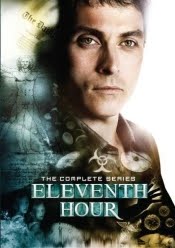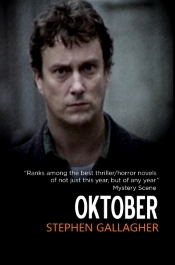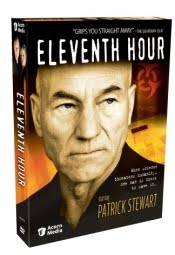Line heard in Don't Wait, Django, Shoot! a badly-dubbed spaghetti western on the low-rent movies4men channel last night: a character looks out of a window to see a man emerging from the building across the street.
The line was meant to be, "Here's a mouse coming out of its hole."
What we heard, thickly-accented, was, "He 'as a mouse coming out of 'is hole."
Friday 31 December 2010
After Gutenberg...
I was thinking about writing a blog post on my trickiest-ever script assignment, and was scrolling through the news section of my old website trying to locate a particular item when I came across this review of The Painted Bride from The Washington Times.

The print edition sold out and I've now priced it as the cheapest of my Kindle titles... if you got a device for Christmas and you've already downloaded all the free classics from Project Gutenberg (and why wouldn't you?), then you might want to give it a go.
(In England that's what we call a 'hard sell')
The Painted Bride (Subterranean Press, $40, 181 pages) is veteran thriller-writer Stephen Gallagher's tense melodrama spun from the mysterious disappearance of auto dealer Frank Tanner's wife Carol, the stalled police investigation into Frank's possible guilt - and the complications ensuing from the obsessive actions of Carol's burnt-out, former drug-taking younger sister Molly, who knows Frank did away with his wife, and devotes her dwindling energies to protecting the children now in his care and bringing him to justice.
Mr. Gallagher expertly shifts among several characters' frazzled viewpoints, detailing the progress of Molly's "investigation" and Frank's suspicious evasive actions in crisp, quick scenes, making chilling use of a child's drawing of a woman in a red dress ("the painted bride"), leading toward a series of violent climaxes at a seaside ferry terminal, where crucial secrets are unearthed - and the paradoxical image of the nurturing parent as murdering monster is finally engaged and explained.
There's even a hint of the supernatural in an endangered child's anguished outcry... It's a neat capstone to an accomplished and suitably unpleasant shocker.

The print edition sold out and I've now priced it as the cheapest of my Kindle titles... if you got a device for Christmas and you've already downloaded all the free classics from Project Gutenberg (and why wouldn't you?), then you might want to give it a go.
(In England that's what we call a 'hard sell')
Monday 27 December 2010
On Method
 For anyone fascinated by process, and I know I'm not alone, here's an example from Derren Brown's blog in which he records, with staged photographs, the evolution of a painted portrait. It has a relevance to writing that I'll explain in a moment.
For anyone fascinated by process, and I know I'm not alone, here's an example from Derren Brown's blog in which he records, with staged photographs, the evolution of a painted portrait. It has a relevance to writing that I'll explain in a moment.For those from outside these shores who may not be familiar with Derren Brown's TV work, he's a magician and mentalist cut from the same cloth as Penn and Teller. He combines an Edwardian illusionist's showmanship with a modern sensibility. He tells you that he's about to deceive you and then compels your sense of wonder anyway.
I'd heard that he painted in his spare time. I may have assumed that he'd be one of those celebrity artists who paints like a chimp and gets bought by sycophant millionaires; if that's what I thought then I was wrong. Derren Brown is a talented painter with a deep grasp of craft, as this developing sequence shows.
Back in my teens I remember getting a valuable lesson from my school art teacher, Mr Chapman. Observing one of us (maybe me) starting off a drawing with some particular feature at a random spot on the paper and then spreading the detail outward like a growing crystal, he stopped the class and explained the simple basics of managing composition. Da Vinci didn't start with the Mona Lisa's eye and keep adding; he laid out the painting's broad blocks of shape first and then worked from big strokes to fine detail. Get the big structure right first; then steadily finesse it, keeping overall control.
A few years later I saw a series of TV programmes by convicted art forger Tom Keating, in each of which he reproduced step-by-step the techniques of various past masters. Genial, and with a love of his subject, Keating deconstructed each painter's journey from structure to detail. The sketches and inspirations that initiate a painting; the laying-out of an overall visual structure; the transfer of drawing onto canvas; the underpainting; the glazes; the final surfacing where the detail from those first sketches finds its place in the bigger scheme.
And the more I saw of other people's processes, the more I realised that at heart the arts are all the same. The sculptor who marks up the outside of a block of stone and then removes the chunks to establish a shape. The composer who orders and connects musical ideas to create a sense of progression and arrival before tackling orchestration. In every case, a sense of the big shape is the key to everything, like a builder pegging out the lines of a building on the ground before the first walls begin to rise.
My school had another art teacher, Mr Connolly. The writing lesson I got from him concerned telephone boxes. One morning he set us the task of drawing a regular red telephone box, the classic cast-iron design that could be seen on almost every street corner back then. I think I walked past at least two of them on my way to school every day. We all knew what they looked like so down our heads went, easy-peasy, scribbling away.
Seems we didn't know what a telephone box looked like at all.
No two depictions were the same and none was even close to life. We had no idea of the number of windows, of how the roof attached to the sides, what the signage was...
The second part of the lesson was to be sent out to look at the box that stood just a couple of hundred yards from the school and this time, to draw from direct observation.
Observation. It's part of the job. Not just of the physical world you're writing about but the details of life and living, of the shadings of human nature. You can get away without it, do no research, make stuff up, rely on the shared experiences of TV and other people's fiction to do the work for you; but that kind of attitude produces very soft fiction indeed. The kind you get from those naive writers who 'write from a trance-like state'.
I didn't keep up with the art. I liked to paint as long as I thought I was good at it. I realised that this affection had more vanity than love in it when I grasped how much more I had to learn. Instead of being eager to tackle the learning, I was deterred. Like so many, all I really wanted was to be told how good I already was.
Labels:
autobiography,
movies,
novels,
odd stuff,
screenplays
Sunday 26 December 2010
Christmas, and a plug for my Kindle stuff
I reckon I must have had a happy childhood because most of my Christmas gifts seem to recall it in one way or another. I'm kinda shameless in the hints I drop but at least it makes me easy to buy for. How else could anyone know that my old Corgi Batmobile needed a nice repro box and liner? (Seven quid, handmade, from Twentieth Century Box UK. Lovely work, and there's no way this guy can be making any money out of it.)
If you're puzzling over a shiny new Kindle today and looking for something to download onto it, let me remind you with an equal lack of shame that I have mucho stuff online now - click here for the UK selection or here for a US link, or just hop on Amazon and search the Kindle store with my name.
If you're puzzling over a shiny new Kindle today and looking for something to download onto it, let me remind you with an equal lack of shame that I have mucho stuff online now - click here for the UK selection or here for a US link, or just hop on Amazon and search the Kindle store with my name.
Wednesday 8 December 2010
The Danger List
My producers have now made an official announcement about the new show I've been developing for Fox, so I suppose it's OK to at least mention it... but as it's a work-in-progress, don't expect me to say too much about it just yet.
Tuesday 7 December 2010
Mr Laurel and Mr Hardy (2)
UPDATE: Check out Andy Greenwood's contribution to the comments section on the original post. Apparently the Laurel and Hardy collection exists in two forms, and Amazon withdrew the set from sale for a while due to a customer complaint about the goods as described.
As far as I can see it's a packaging issue and not a disc quality issue; the first boxed set had better cases and booklet inserts, while the second set (which this is) has the same material with bare-bones packaging and no booklets.
If that's a problem for you, apologies if I've steered you wrong. Personally I still think it's a great buy.
Amazon has now revised the sales info and the set's available again, still bouncing around under the £30 mark. For my part, I feel that packaging rarely adds value to a DVD; I'd say never, but there will always be the glaring exception of my beloved King Kong in a tin. Which I note can currently be picked up in the US from Amazon sellers for around five dollars plus shipping.
Which low price suggests that the added value is personal to me, and hardly a market enhancement. The difference between, say, a vinyl LP in a well-designed sleeve, and a CD in an all-purpose jewel case with a disposable insert, mirrors a change in our perceptions. In making the packaging more generic and more convenient to themselves, distributors have hastened our changing attitude along. LPs were kinda lovely. But now when I buy movies or music, I don't particularly want them taking up space in my house.
As far as I can see it's a packaging issue and not a disc quality issue; the first boxed set had better cases and booklet inserts, while the second set (which this is) has the same material with bare-bones packaging and no booklets.
If that's a problem for you, apologies if I've steered you wrong. Personally I still think it's a great buy.
Amazon has now revised the sales info and the set's available again, still bouncing around under the £30 mark. For my part, I feel that packaging rarely adds value to a DVD; I'd say never, but there will always be the glaring exception of my beloved King Kong in a tin. Which I note can currently be picked up in the US from Amazon sellers for around five dollars plus shipping.
Which low price suggests that the added value is personal to me, and hardly a market enhancement. The difference between, say, a vinyl LP in a well-designed sleeve, and a CD in an all-purpose jewel case with a disposable insert, mirrors a change in our perceptions. In making the packaging more generic and more convenient to themselves, distributors have hastened our changing attitude along. LPs were kinda lovely. But now when I buy movies or music, I don't particularly want them taking up space in my house.
Monday 6 December 2010
Pipe Bursts
True story.
The late '70s weren't exactly the biplane-and-barnstorming days of television technology, although looking back from today it can sometimes seem like it. In Granada TV's Presentation Department we ran traffic control on live feeds both from network and our own studios, analog VT from two-inch tape, and an array of telecine machines that had gone missing from some museum. Whatever film you put on them, out came Arthur Askey.
Our tools and continuity aids were glass-mounted slides, cardboard captions, a clock in a brightly-lit box with some complicated swinging mirror arrangement, and a small team of continuity announcers (including friend-of-the-blog Malcolm Brown) ready to leap in and burble off-the-cuff with total confidence for however long it took for an on-air breakdown to be fixed, resolved, or otherwise dodged-around. Our workplace was a wall of TV screens and a vision mixing desk that I was told had been thrown out by the Post Office some ten years before.
(At that time the GPO handled the routing and switching of all telecommunications land lines, as well as the mail... that's how London's Post Office Tower got its name.)
Each day's commercials came on three, sometimes four 35mm reels that had to be assembled and then broken down daily by the Film Ops department. Everything ran to a schedule and the breaks were of an allotted length. The Sales people in London would work until the last minute to sell the available commercial time, but inevitably there would be some breaks - mostly in the afternoons, or late at night - that wouldn't be fully sold.
Sometimes we could just reconfigure the schedule on the hoof and make those breaks shorter. But mostly that wasn't an option... it could throw out your timings and cause problems further down the line. Or it would leave telecine or VT with insufficient time to run through the leader in the middle of a reel to line up the next part of whatever we were showing.
In those cases we had a book of Central Office of Information films that we could slot into the gaps. They were the same length and format as our commercials and they cost the company nothing to run. If you watched British TV back then, they'll be etched into your consciousness. French Frank, with Graham Stark, was a genuinely witty short about the safest way to reverse an articulated lorry. The Spirit of Dark and Lonely Water was a safety warning aimed at children, so traumatising that we were forbidden to schedule it when children might be watching.
Then there was Pipe Bursts. My personal favourite.
The maximum length of an ITV break in the late '70s was three minutes and forty seconds. That was three and a half minutes of commercial time plus ten seconds' allowance for the fractional spaces in between ads and the reaction time of the controller. The last film clip in every break would have ten seconds of freeze-frame on the end, to bridge any final gap.
Pipe Bursts looked like a home movie shot by the kind of bloke who built his own caravan. I still can't decide whether it was genuinely inept, or a gonzo work of calculated amateur charm.
The 'freeze frame' consisted of everyone in the family standing as still as they could, for as long as they could.
Which wasn't very long.
Whenever there was a gap, and the choice was mine to make, I'd slot it in. By rolling everything tight and cutting fast, I could get to the end of a three-and-a-half minute break with almost the full ten seconds to spare.
Ten seconds is a looooooong time on a TV screen. Watch the little girl on the right.
Whoever uploaded this... if it was taken from live TV, chances are I was on shift at the time.
NB: For maximum cringe, click the lower right-hand corner of the Youtube box to view it fullscreen. Press Esc afterwards to return to normal.
The late '70s weren't exactly the biplane-and-barnstorming days of television technology, although looking back from today it can sometimes seem like it. In Granada TV's Presentation Department we ran traffic control on live feeds both from network and our own studios, analog VT from two-inch tape, and an array of telecine machines that had gone missing from some museum. Whatever film you put on them, out came Arthur Askey.
Our tools and continuity aids were glass-mounted slides, cardboard captions, a clock in a brightly-lit box with some complicated swinging mirror arrangement, and a small team of continuity announcers (including friend-of-the-blog Malcolm Brown) ready to leap in and burble off-the-cuff with total confidence for however long it took for an on-air breakdown to be fixed, resolved, or otherwise dodged-around. Our workplace was a wall of TV screens and a vision mixing desk that I was told had been thrown out by the Post Office some ten years before.
(At that time the GPO handled the routing and switching of all telecommunications land lines, as well as the mail... that's how London's Post Office Tower got its name.)
Each day's commercials came on three, sometimes four 35mm reels that had to be assembled and then broken down daily by the Film Ops department. Everything ran to a schedule and the breaks were of an allotted length. The Sales people in London would work until the last minute to sell the available commercial time, but inevitably there would be some breaks - mostly in the afternoons, or late at night - that wouldn't be fully sold.
Sometimes we could just reconfigure the schedule on the hoof and make those breaks shorter. But mostly that wasn't an option... it could throw out your timings and cause problems further down the line. Or it would leave telecine or VT with insufficient time to run through the leader in the middle of a reel to line up the next part of whatever we were showing.
In those cases we had a book of Central Office of Information films that we could slot into the gaps. They were the same length and format as our commercials and they cost the company nothing to run. If you watched British TV back then, they'll be etched into your consciousness. French Frank, with Graham Stark, was a genuinely witty short about the safest way to reverse an articulated lorry. The Spirit of Dark and Lonely Water was a safety warning aimed at children, so traumatising that we were forbidden to schedule it when children might be watching.
Then there was Pipe Bursts. My personal favourite.
The maximum length of an ITV break in the late '70s was three minutes and forty seconds. That was three and a half minutes of commercial time plus ten seconds' allowance for the fractional spaces in between ads and the reaction time of the controller. The last film clip in every break would have ten seconds of freeze-frame on the end, to bridge any final gap.
Pipe Bursts looked like a home movie shot by the kind of bloke who built his own caravan. I still can't decide whether it was genuinely inept, or a gonzo work of calculated amateur charm.
The 'freeze frame' consisted of everyone in the family standing as still as they could, for as long as they could.
Which wasn't very long.
Whenever there was a gap, and the choice was mine to make, I'd slot it in. By rolling everything tight and cutting fast, I could get to the end of a three-and-a-half minute break with almost the full ten seconds to spare.
Ten seconds is a looooooong time on a TV screen. Watch the little girl on the right.
Whoever uploaded this... if it was taken from live TV, chances are I was on shift at the time.
NB: For maximum cringe, click the lower right-hand corner of the Youtube box to view it fullscreen. Press Esc afterwards to return to normal.
Subscribe to:
Posts (Atom)




































